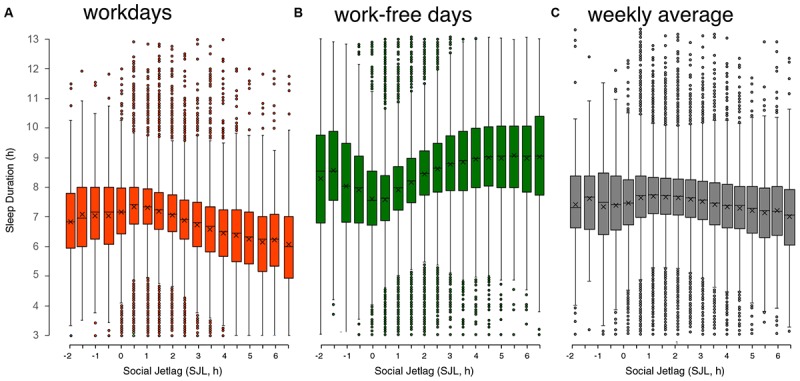FIGURE 4.

Relationship of sleep duration on workdays (A), on work-free days (B), and weekly average sleep duration (C) with social jetlag (SJL). Data are taken from the MCTQ database (n ≈ 300,000). Participants with a complete set of questions necessary to compute SJL and with the respective MCTQ variables being within three standard deviations of the mean (μ ± 3σ) were used for the analysis (workdays: n = 193,927; work-free days: n = 198,096; weekly average: n = 193,927). On a weekly average, people who suffer from 3 h of SLJ or more sleep approximately 1 h less per night, adding up to a sleep-loss of 5 h/week. Boxplots are Tukey boxplots with whiskers encompassing all data within 1.5 times the interquartile range; data outside these ranges are depicted as points. ANOVA shows that for free days and workdays significant differences are found on average 3–4 half-hour bins apart while for the weekly average significance is only reached at differences of 7–8 half-hour bins (data originally published in Roenneberg et al., 2019).
